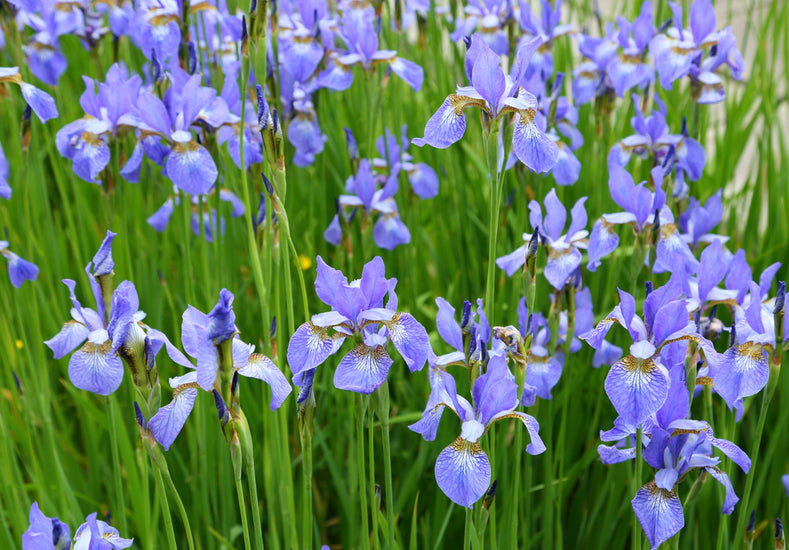Siberian Iris (Iris sibirica) is a stunning perennial plant known for its elegant blooms and graceful foliage. Here's a step-by-step guide to help you successfully grow Siberian Iris in your garden:
Select an ideal location: Siberian Iris thrives in full sun to partial shade. Choose a location in your garden that receives at least 6 hours of sunlight per day. Ensure the soil is well-draining to prevent waterlogging, as Siberian Iris prefers moist but not waterlogged conditions.
Prepare the soil: Siberian Iris prefers slightly acidic to neutral soil with a pH range of 6.0 to 7.5. Amend the soil with organic matter, such as compost or well-rotted manure, to improve its fertility and drainage. Remove any weeds or rocks from the planting area.
Planting time: The best time to plant Siberian Iris is in early spring or late summer. This allows the plants to establish their roots before the extreme temperatures of winter or summer.
Planting process:
- Dig a hole that is wide and deep enough to accommodate the plant's roots comfortably.
- Place the Siberian Iris rhizome in the hole, ensuring that the top of the rhizome is level with the soil surface.
- Backfill the hole with soil, gently firming it around the rhizome. Avoid burying the rhizome too deep, as this can hinder its growth and flowering.
Watering and moisture:
- Keep the newly planted Siberian Iris well-watered until the roots establish themselves.
- Water deeply but infrequently, providing about an inch of water per week during the growing season. Avoid overwatering, as it can lead to root rot.
- Mulching around the plants helps retain moisture and suppresses weed growth.
Fertilisation: Siberian Iris is a relatively low-maintenance plant and doesn't require heavy feeding. However, a balanced, slow-release fertiliser applied in early spring can provide essential nutrients.
Maintenance:
- Remove any weeds that may compete with the Siberian Iris for nutrients and water.
- Deadhead the flowers after they fade to encourage continued blooming and prevent seed formation.
- Divide overcrowded clumps every three to five years to maintain plant vigour and promote better flowering. This is best done in late summer or early autumn.
Winter care: Siberian Iris is generally hardy and can withstand cold winter temperatures. Mulch the plants with a layer of organic material, such as straw or shredded leaves, to protect the roots from frost heaving and extreme temperature fluctuations.
Pests and diseases: Siberian Iris is relatively resistant to pests and diseases. However, keeping the plants healthy and well-maintained can help prevent issues. Watch out for slug damage and treat if necessary. Proper spacing and good airflow can help prevent fungal diseases.
By following these guidelines, you can successfully grow and enjoy the beauty of Siberian Iris in your garden. With their elegant blooms and reliable performance, these perennials will add a touch of grace and colour to your landscape year after year.


